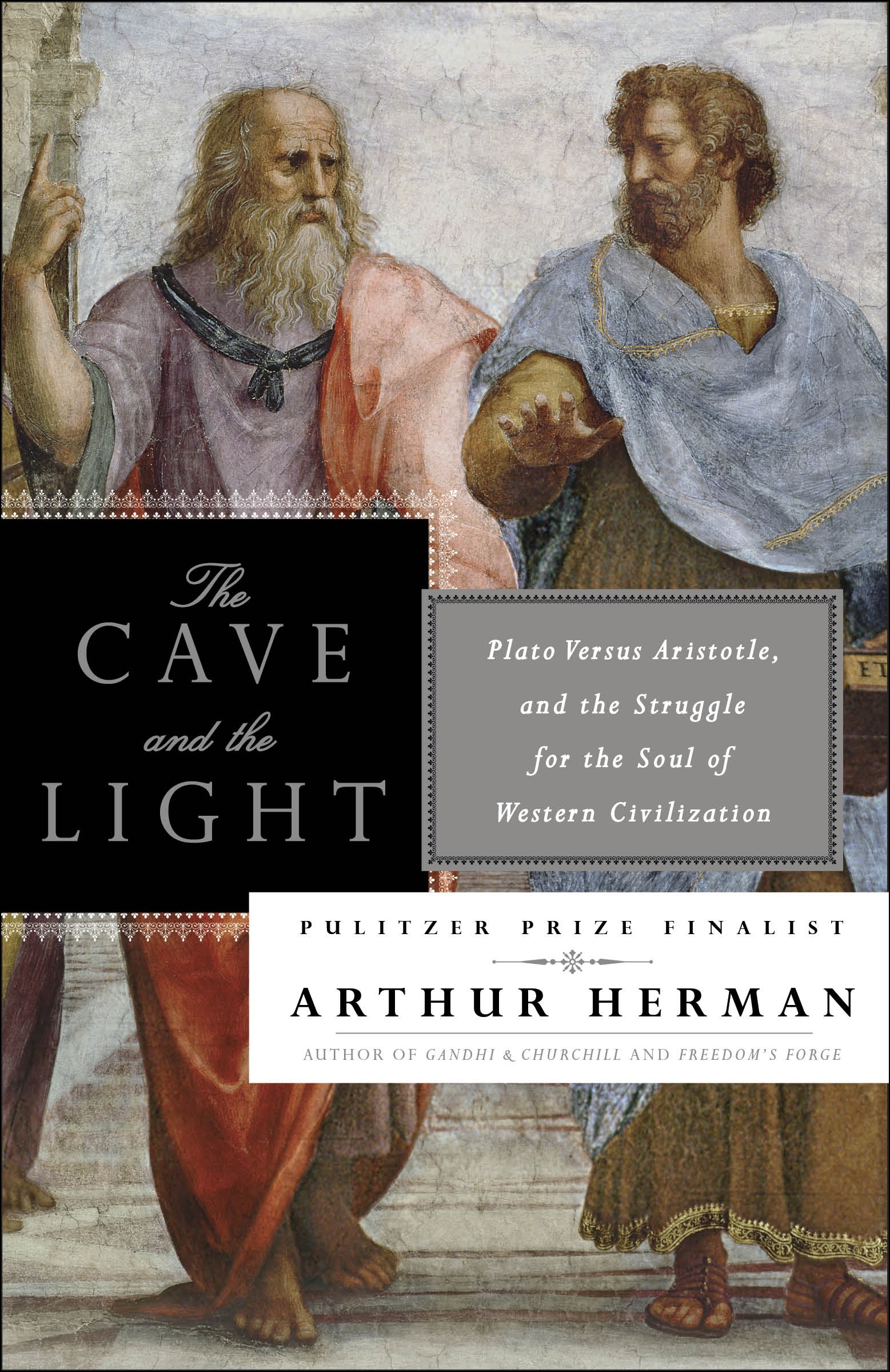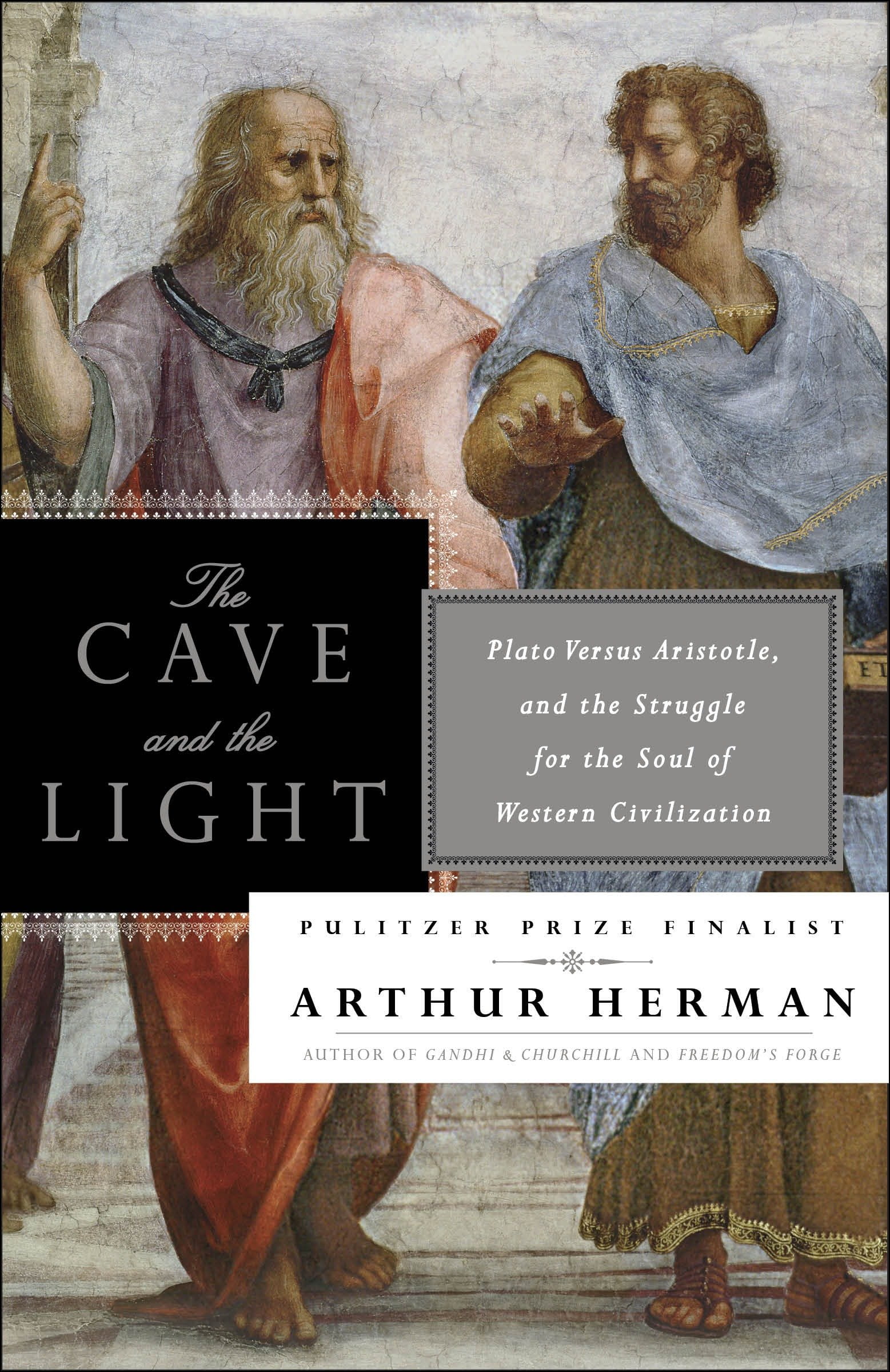

The Cave and the Light uses the framework of the two philosophers to discuss Alexandria, ancient Rome, Constantinople, the spread of Christianity, Europe in the Middle Ages, the Age of Enlightenment, the French Revolution, the founding of the United States, the rise of communism in Russia, and Nazism. Herman attributes political, religious, and philosophical changes throughout history to the influence of the philosophies of either Plato or Aristotle. In addition to Plato's Academy and Aristotle's Lyceum, the book covers the competing and successive Hellenistic schools of philosophy: Epicureans, Stoics, Cynics, and Skeptics. The book provides a detailed comparison between Plato's Republic and Aristotle's Politics. Herman next introduces Aristotle, a pupil of Plato who went on to develop a philosophical model at odds with Plato's.

The first several chapters of The Cave and the Light focus on Socrates and his pupil Plato, as well as earlier philosophers whose ideas they built on: Pythagoras, Heraclitus, Parmenides. Using Raphael's The School of Athens painting to introduce the various schools of philosophy, Herman refers back to figures in the painting and their positions in relation to others frequently throughout the book.

The book was published as a hardcover in October 2013 by Random House and as a trade paperback in June 2014. The book contrasts the philosophical approaches of Plato and Aristotle directly, then examines changes in political, religious, and philosophical views in western societies from the days of ancient Greece to the present in the context of their relationship to Platonic or Aristotelian viewpoints. The Cave and the Light: Plato Versus Aristotle and the Struggles for the Soul of Western Civilization is the seventh non-fiction book written by American historian Arthur L. For help defining the best practices to brighten up your, connect with our lighting specialists by calling 1-80 or trying our convenient “pop-up chat feature” at the bottom right corner of our web pages.Print ( hardback and paperback) and ebook However, if you are lighting a space to be occupied by people-and you care about the happiness and productivity of said people-then make sure to plan for ample light to illuminate the ceiling. If you are looking to reproduce a philosophical work that harkens back to a dark, dingy, claustrophobic space, then have no fear of caves. Changing out dark colors for lighter colors will help to reflect more of the existing light upwards, illuminating the ceiling and reducing the cave effect. Additional solutions include wall-mounted fixtures that are angled up towards the ceiling, floor lamps that produce a large distribution of light towards the ceiling, and possibly rethinking the interior design. Replacing your existing fixtures with these bidirectional fixtures is the easiest way to eliminate the cave effect, but what if replacement is not an option? You can always add some indirect lights, which will help to decrease the cave effect and without impacting your current lighting design. A brilliant choice to evenly light up a larger industrial space is the 4’ PLT Premium Spec linear fixture enabled with both the up and down lighting, 60,000 life hours of use, and tremendous efficacy at 123 lumens per watt, all at an incredible value. Fixtures that spread indirect light this way use a specialized optic to distribute the light in a very wide pattern that helps to eliminate hot spots, and ensures the ceiling is evenly lit. If your fixtures are going to be suspended close to the ceiling, or really anytime you want to make sure the ceiling is lit as evenly as possible, look for a wide-light distribution, also called a batwing. If the fixture is too close, you will end up with a “hot spot,” or a very bright spot where most of the light is focused causing the space to be unevenly lit. It is also important to consider how far a fixture is from the ceiling when employing any kind of indirect lighting. With a variety of sizes, this fixture is an ideal choice to overcome the cave effect in spaces such as offices, retail stores, schools, or other commercial locations where high design equals high value. A perfect lighting solution that offers the direct and indirect lighting that suspends from the ceiling, beautifully combating the cave effect, is the PLT Premium Spec Architectural LED Linear Fixture. These fixtures not only produce and distribute light directly to the space below, but also indirectly back up to the ceiling. A better choice is a fixture that is suspended from the ceiling, which provides bidirectional light, also known as indirect/direct light. Canned or recessed lights offer very little opportunity to illuminate the ceiling, although a few canned lights do have an illuminated trim ring that will produce a small amount of light for the ceiling.


 0 kommentar(er)
0 kommentar(er)
